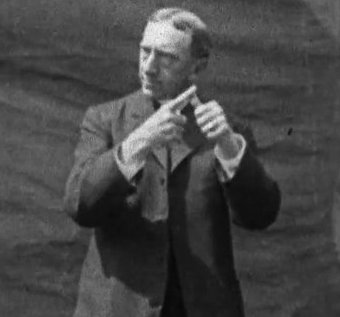By Rich Cairn, History, Civics & Social Studies Inclusion Specialist, CES
Teaching about Disability in the Gilded Age and Progressive Era
Slides from presentation by Rich Cairn at the virtual conference: A More Perfect Union: Exploring America's Story in the Gilded Age and Progressive Era, June 17, 2024
A More Perfect Union: Exploring America's Story in the Gilded Age and Progressive Era Virtual Conference was organized by the Chicago History Museum, Loyola University Chicago, and the University of Illinois Chicago with support from the National Endowment for the Humanities.
Institutionalization
Schools for Deaf, blind, deaf-blind, and students with intellectual disabilities, as well as asylums were founded by reformers in the early 1800s. By the end of the century, nearly every state had these institutions. Conditions became crowded and poorly served. Residency peaked in the 1950s, when disabled advocates and their families began to demand better treatment and closure of most large institutions. The 1990 Americans with Disabilities Act further empowered citizens to achieve independence and better treatment.
Disabled Veterans
The Civil War caught both sides utterly unprepared to care for wounded and disabled soldiers. Volunteers leaped into action. The U.S. Government eventually developed vast systems of hospitals, soldiers' homes, and pensions for Union veterans. By century's end, there was a backlash to the cost and a rising stigma toward disability.
Immigration Infrastructure
With two 1882 immigration laws, Congress established a system to exclude people with disabilities as well as Asians. Immigrants were stigmatized as inherently weak and diseased, as well as politically dangerous.
Eugenics Movement
Along with efforts to constrain people with disabilities and dark-skinned immigrants, the eugenics movement targeted its false science against people of color and poor people. The Catholic Church and some others objected at the time, though the movement was popular with elite conservatives and progressives alike. Eugenics inspired hate groups in the United States and the Nazis in Europe. The United States Supreme Court approved as states passed laws to sterilize people with disabilities and people of color without their permission and sometimes without their knowledge. Some 60,000 suffered this mistreatment into the 1970s. Yet in the 21st century, some states set up compensation funds for some victims.
Long Arc of Disability Rights
Disabled people began to create schools and other services and advocacy groups by the early 1800s. By the early 1900s, organizations of as well as for people with disabilities emerged in many forms across country, starting with Deaf and blind advocates. Resources and organization grew through the 1960s when groups began to band together across disability. Grassroots organizing exploded through the 1970s and 1980s, leading to 1990 passage of the Americans with Disabilities Act. Disability advocates continue to develop and evolve, including a new emphasis on capturing and sharing disability history.
Curricula, Primary Sources, and Other Resources
Emerging America
- Reform to Equal Rights: K-12 Disability History Curriculum - Free, accessible lessons using 250+ primary sources. Developed with support from a Library of Congress Teaching with Primary Sources grant:
- Disability in the Progressive Era
- Immigration: Who Is In? And Who Is Out?
- The Dehumanizing Effects of Eugenics
- Founding of Schools and Asylums
- How the Civil War Transformed Disability
- Disability in the Progressive Era
- Online Exhibit: How Civil War Veterans Transformed Disability
- Disability History through Primary Sources - Portal to a wide variety of collections and teaching resources.
Other Resources on Disability in the Gilded Age and Progressive Era
- Disability History Museum - Searchable database of thousands of primary sources in the oldest virtual disability history collection.
- Selected resources from the Library of Congress:
- Becoming Helen Keller - PBS Learning Media teaching materials from the American Masters broadcast.
- Facing History and Ourselves - Offers thoroughly resourced lessons on Eugenics in the U.S. and on Nazi persecution and systematic murder of people with disabilities.
- Minnesota Historical Society - Primary source set on eugenics.
- Perkins School for the Blind - Searchable resources on the long history of America's first school for the blind.
- Deaf: Cultures and Communication, 1600 to the Present - Yale University.




